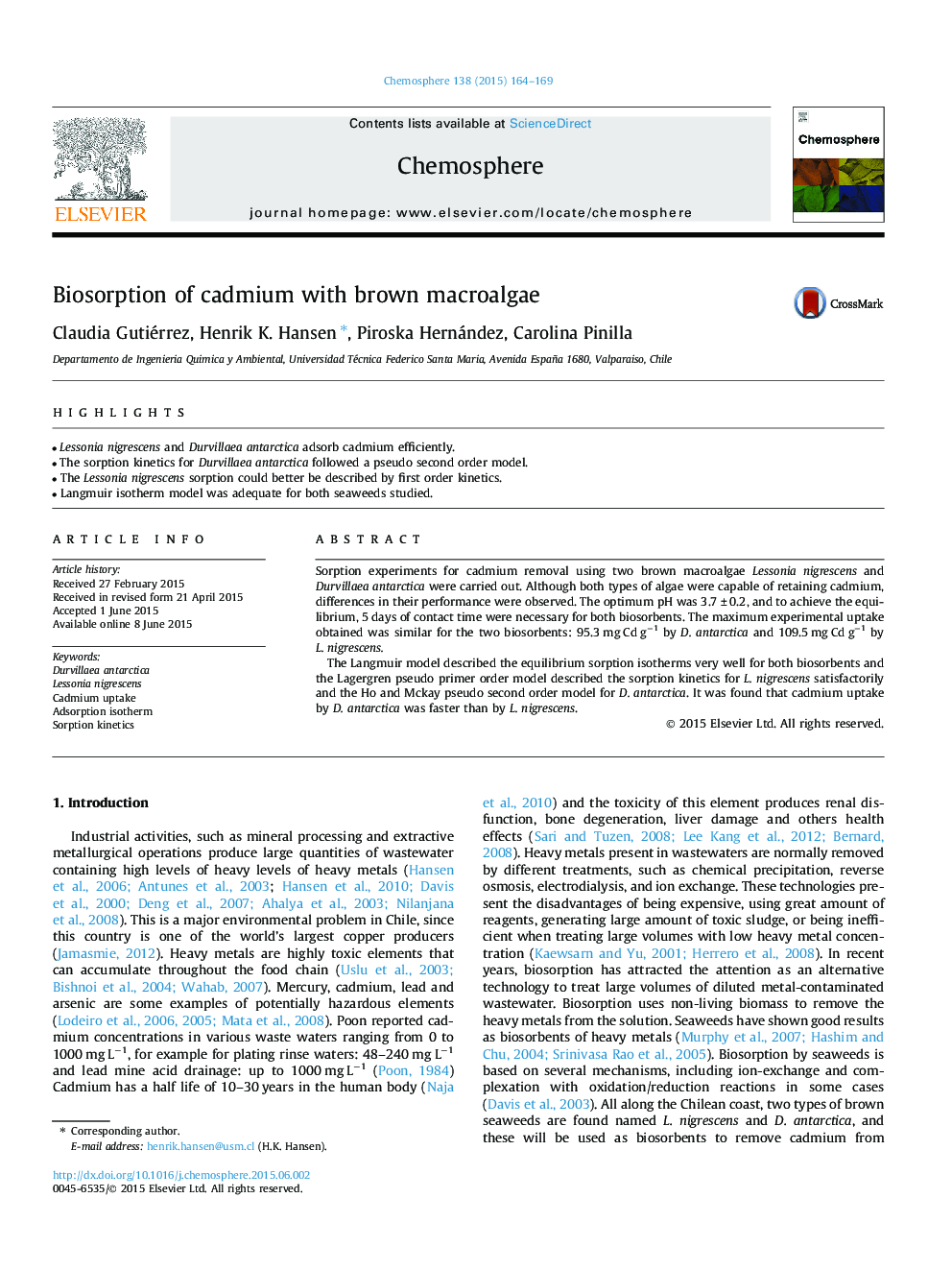| Article ID | Journal | Published Year | Pages | File Type |
|---|---|---|---|---|
| 6307423 | Chemosphere | 2015 | 6 Pages |
â¢Lessonia nigrescens and Durvillaea antarctica adsorb cadmium efficiently.â¢The sorption kinetics for Durvillaea antarctica followed a pseudo second order model.â¢The Lessonia nigrescens sorption could better be described by first order kinetics.â¢Langmuir isotherm model was adequate for both seaweeds studied.
Sorption experiments for cadmium removal using two brown macroalgae Lessonia nigrescens and Durvillaea antarctica were carried out. Although both types of algae were capable of retaining cadmium, differences in their performance were observed. The optimum pH was 3.7 ± 0.2, and to achieve the equilibrium, 5 days of contact time were necessary for both biosorbents. The maximum experimental uptake obtained was similar for the two biosorbents: 95.3 mg Cd gâ1 by D. antarctica and 109.5 mg Cd gâ1 by L. nigrescens.The Langmuir model described the equilibrium sorption isotherms very well for both biosorbents and the Lagergren pseudo primer order model described the sorption kinetics for L. nigrescens satisfactorily and the Ho and Mckay pseudo second order model for D. antarctica. It was found that cadmium uptake by D. antarctica was faster than by L. nigrescens.
